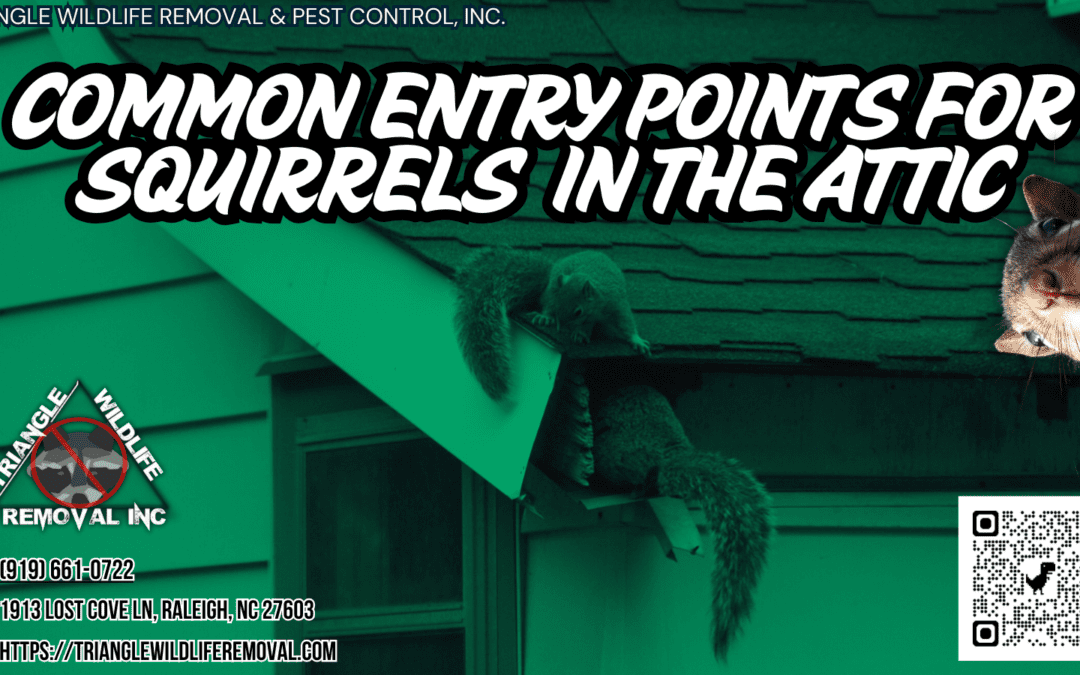Squirrels finding their way into attics is a common issue faced by many homeowners. The most frequent entry points for these agile creatures include roof gaps, chimney openings, soffit damage, attic vents, and siding joints. Understanding where these entry points are can help prevent these pests from making themselves at home in your attic. Identifying and securing these entryways is crucial to ensuring a squirrel-free living space. But what other implications can these unwanted visitors bring along with them? Let’s explore further.
Key Takeaways
- Roof gaps and soffit vulnerabilities are common entry points for squirrels in the attic.
- Chimney openings and siding joints provide easy access for squirrels seeking shelter.
- Attic vents and insulation damage are crucial entry points for squirrels looking for nesting spots.
- Tree branches near the attic act as bridges for squirrels, facilitating their entry.
Roof Gaps
Roof gaps are one of the primary entry points used by squirrels to access attics in residential homes. These small openings provide easy access for squirrels, allowing them to enter the cozy and warm space of an attic. Squirrels are agile creatures that can easily navigate tree branches to reach the roof of a house. Once on the roof, they look for vulnerabilities such as gaps between roof shingles where they can gnaw and create a larger opening to gain entry.
Tree branches near the roof can act as bridges for squirrels, enabling them to leap onto the roof and explore potential entry points. Roof shingles, if not properly maintained or damaged, can create gaps that squirrels exploit to get inside. Homeowners should regularly inspect their roofs for any gaps or missing shingles to prevent these furry intruders from accessing their attics. By addressing roof gaps promptly, homeowners can effectively squirrel-proof their homes and protect their attics from unwanted guests.
Chimney Openings
Chimney openings serve as another common entry point utilized by squirrels to access attics in residential properties. Squirrels are adept climbers and often use overhanging tree branches near chimneys to gain access to roofs. Once near a chimney, they can easily jump onto the chimney or nearby roof to find their way into the attic. Additionally, bird feeders placed near chimneys can attract squirrels, leading them closer to potential entry points.
To prevent squirrels from entering through chimney openings, it is essential to trim back tree branches that provide easy access to the roof. Regularly inspecting the area around the chimney for any signs of squirrel activity can also help in identifying and addressing potential entry points promptly. Installing chimney caps or screens can effectively block off these openings while still allowing proper ventilation. By taking these preventative measures, homeowners can safeguard their attics from squirrel invasions through chimney openings.
Soffit Damage
Soffit damage can serve as a significant vulnerability for squirrels seeking entry points into attics in residential homes. When squirrels target soffits, they can cause various issues that compromise the integrity of the attic space. Here are three key points to consider:
- Soffit repair: Damaged soffits need immediate attention to prevent easy access for squirrels. Repairing any holes or weak points in the soffit structure can help deter these critters from entering the attic.
- Insulation damage: Squirrels can damage insulation within the soffit area while creating nests or pathways. This can lead to reduced energy efficiency in the home and potential health hazards if left unaddressed.
- Nesting habits, deterrent methods: Understanding squirrel nesting habits can aid in implementing effective deterrent methods. By discouraging nesting in soffit areas through deterrents like motion-activated lights or trimming tree branches near the roof, homeowners can help protect their attics from squirrel invasions. Regular inspections and maintenance can also help identify and address soffit damage promptly.
Attic Vents
When considering potential entry points for squirrels in residential attics, one crucial area to inspect is the attic vents. Squirrels can exploit these openings to gain access to the attic space for shelter or nesting. One effective way to prevent squirrel intrusion through attic vents is by installing vent screening. This screening acts as a barrier, blocking squirrels from entering while still allowing for proper ventilation.
| Pros of Vent Screening | Cons of Vent Screening |
|---|---|
| Prevents squirrel entry | May require professional installation |
| Allows for ventilation | Regular maintenance needed to ensure effectiveness |
| Cost-effective solution | Some squirrels may attempt to chew through screening |
Moreover, squirrels are known to use insulation nesting in attics, which can lead to damage and potential fire hazards. By securing attic vents with appropriate screening, homeowners can safeguard their attics from squirrel intrusions and the associated risks. Regular inspections and maintenance of the vent screening can help ensure its continued effectiveness in keeping squirrels out of the attic space.
Siding Joints
Siding joints serve as potential entry points for squirrels seeking access to residential attics, posing a risk of infestation and associated property damage. These small creatures can exploit the vulnerabilities in siding joints to gain entry into homes. Here are some key factors to consider regarding siding joints and squirrel intrusion:
- Insulation Gaps: Squirrels can squeeze through tiny openings around siding joints, especially if there are any gaps in the insulation. Once inside, they can cause damage by gnawing on wires and wooden structures.
- Nesting Materials: Squirrels are known to use various materials for nesting, and siding joints can provide easy access to these materials. This behavior can lead to extensive damage within the attic space.
- Tree Branches, Climbing Abilities: Squirrels are adept climbers and can access siding joints by jumping from overhanging tree branches. Their climbing abilities make it crucial to trim branches away from the house to prevent easy access to the attic.

